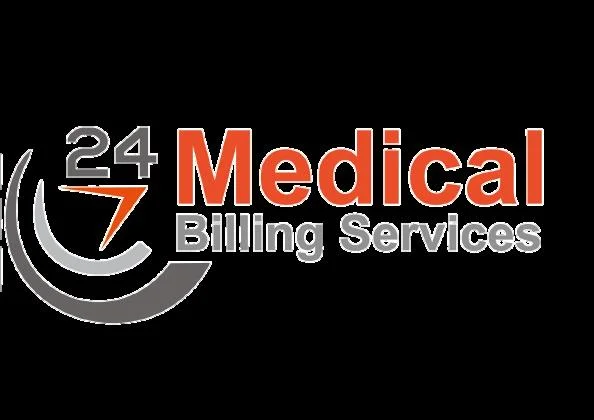Introduction:
The healthcare industry is undergoing a profound transformation fueled by digital and technological innovations. Among the various facets of this evolution, medical billing stands out as a critical area where advancements are reshaping traditional processes. This comprehensive exploration delves into the multifaceted impact of digital and technological innovations on medical billing, examining how these changes are enhancing efficiency, reducing errors, and fundamentally transforming the landscape of healthcare finance.
- Streamlining Administrative Processes:
- Electronic Health Records (EHRs): The widespread adoption of Electronic Health Records (EHRs) has revolutionized medical billing. EHR systems enable healthcare providers to seamlessly integrate patient data, diagnoses, and treatment plans, streamlining the orthopedics medical billing process by providing a centralized repository of accurate and up-to-date information. This integration minimizes errors, reduces paperwork, and accelerates the billing cycle.
- Automated Billing Systems: The advent of automated billing systems has brought about a paradigm shift in the efficiency of medical billing. These systems leverage artificial intelligence (AI) and machine learning algorithms to automate routine billing tasks, such as claim generation, submission, and follow-up. Automation not only expedites the billing process but also significantly reduces the likelihood of human errors.
- Enhancing Accuracy and Compliance:
- Coding Assistance Tools: Technological innovations have introduced coding assistance tools that aid healthcare professionals in assigning accurate codes to diagnoses and procedures. These tools utilize natural language processing (NLP) and AI algorithms to analyze clinical documentation, ensuring that the assigned codes comply with coding guidelines and regulations. This not only improves accuracy but also minimizes the risk of claim denials.
- Real-Time Eligibility Verification: Digital innovations have facilitated real-time eligibility verification, allowing healthcare providers to confirm a patient’s insurance coverage and benefits instantaneously. This real-time verification reduces the likelihood of claim denials due to eligibility issues, enhancing the financial viability of healthcare practices.
- Blockchain in Billing: The implementation of blockchain technology in medical billing introduces enhanced security and transparency. Blockchain ensures the immutability of transaction records, reducing the risk of fraudulent activities and enhancing data integrity. This technology has the potential to revolutionize the billing process by creating a secure and decentralized ledger of all financial transactions.
III. Improving Patient Engagement and Experience:
- Online Patient Portals: Digital innovations have led to the development of online patient portals, allowing individuals to access their medical records, view bills, and communicate with healthcare providers. This transparency not only empowers patients to take control of their healthcare journey but also reduces administrative burdens by enabling secure online payment options.
- Telehealth and Remote Patient Monitoring: The rise of telehealth and remote patient monitoring has altered the traditional model of healthcare delivery. These technologies enable healthcare providers to remotely monitor patient health, reducing the need for in-person visits. From a billing perspective, this shift necessitates adjustments in reimbursement models, emphasizing the importance of adaptable billing systems.
- Addressing Regulatory and Compliance Challenges:
- Health Information Exchange (HIE): Health Information Exchange (HIE) platforms facilitate the secure sharing of patient information among healthcare providers, ensuring continuity of care. From a billing standpoint, HIEs contribute to more accurate and coordinated billing processes, particularly in cases involving multiple providers or care settings.
- Regulatory Compliance Software: The complexity of healthcare regulations requires diligent adherence to compliance standards. Regulatory compliance software, powered by advanced algorithms, assists healthcare organizations in staying compliant with evolving regulatory requirements. This technology helps mitigate the risk of non-compliance-related penalties and fines.
- Future Trends and Innovations:
- Artificial Intelligence (AI) and Predictive Analytics: The integration of AI and predictive analytics holds immense potential for the future of medical billing. These technologies can analyze historical billing data to predict reimbursement patterns, identify potential issues, and optimize billing strategies. Predictive analytics, coupled with AI, can enhance decision-making and financial planning for healthcare organizations.
- Augmented Reality (AR) in Training: Augmented Reality (AR) applications can revolutionize the training of billing and coding professionals. By providing immersive, hands-on experiences, AR can enhance the learning process, improve skill acquisition, and reduce training time. This innovation addresses the ongoing need for well-trained billing staff in a rapidly evolving healthcare landscape.
- Challenges and Considerations:
- Data Security and Privacy Concerns: The digitization of medical billing introduces concerns about data security and patient privacy. Protecting sensitive health information from cyber threats requires robust cybersecurity measures and adherence to strict data protection regulations.
- Integration and Interoperability Challenges: The interoperability of different systems remains a challenge in the healthcare landscape. Ensuring seamless integration between Ambulatory EHRs, billing systems, and other technological solutions is crucial for optimizing the benefits of digital innovations in medical billing.
Conclusion:
The impact of digital and technological innovations on medical billing is profound and multifaceted. From streamlining administrative processes and enhancing accuracy to improving patient engagement and addressing regulatory challenges, these innovations are reshaping the landscape of healthcare finance. As the industry continues to evolve, healthcare providers must stay abreast of emerging technologies, adapt to regulatory changes, and embrace innovative solutions to navigate the complexities of medical billing in the digital era. By doing so, healthcare organizations can not only optimize their financial processes but also contribute to the delivery of more efficient, patient-centered care.


